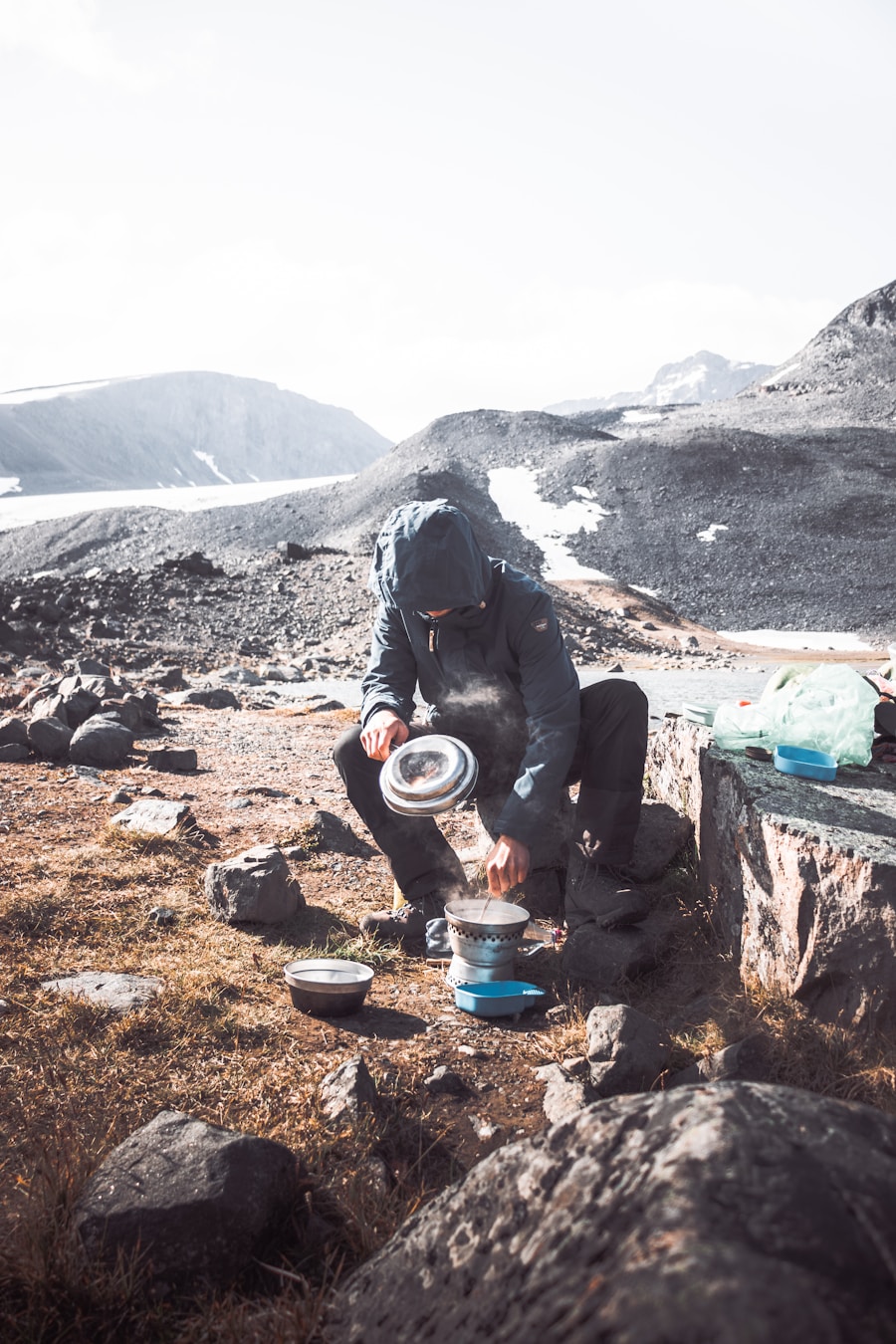Altitude sickness, also known as acute mountain sickness (AMS), is a condition that can affect individuals who ascend to high elevations too quickly. It occurs when the body struggles to adapt to the reduced oxygen levels found at higher altitudes, typically above 8,000 feet (2,400 meters). The symptoms can range from mild to severe and may include headaches, nausea, dizziness, and fatigue.
The physiological changes that occur in the body at high altitudes are primarily due to lower atmospheric pressure, which results in decreased oxygen availability. As a result, the body must work harder to deliver oxygen to vital organs, leading to various symptoms. The risk of developing altitude sickness increases with elevation and the speed of ascent.
Individuals who ascend rapidly without allowing their bodies time to acclimatize are particularly vulnerable. Factors such as individual susceptibility, physical fitness, and previous experience at high altitudes also play significant roles in determining who may be affected. Understanding these dynamics is crucial for anyone planning to venture into mountainous regions, as altitude sickness can pose serious health risks if not properly managed.
Key Takeaways
- Altitude sickness is caused by the body’s inability to adjust to decreased oxygen levels at higher altitudes.
- Preparing for high altitude hikes involves physical conditioning, proper gear, and understanding the route and weather conditions.
- Hydration and nutrition are crucial at high altitudes to prevent dehydration and maintain energy levels.
- Gradual acclimatization techniques, such as ascending slowly and taking rest days, can help reduce the risk of altitude sickness.
- Recognizing symptoms of altitude sickness, such as headache, nausea, and dizziness, is important for early intervention and treatment.
Preparing for High Altitude Hikes
Preparation is key when it comes to high-altitude hiking. Before embarking on such an adventure, it is essential to conduct thorough research on the specific area you plan to explore. This includes understanding the elevation of your destination, the terrain, and the weather conditions you may encounter.
Familiarizing yourself with the trail and its challenges can help you mentally prepare for the journey ahead. Additionally, it is wise to consult with experienced hikers or local guides who can provide valuable insights into the region’s unique characteristics. Physical conditioning is another critical aspect of preparation.
Engaging in cardiovascular exercises such as running, cycling, or swimming can enhance your overall fitness level and improve your body’s ability to cope with lower oxygen levels. Strength training can also be beneficial, particularly for building endurance in your legs and core, which are essential for navigating rugged terrain. Moreover, practicing hikes at progressively higher elevations can help your body adapt to altitude changes more effectively.
This gradual exposure allows you to gauge your response to altitude and make necessary adjustments before tackling more challenging hikes.
Hydration and Nutrition at High Altitudes

Maintaining proper hydration and nutrition is vital when hiking at high altitudes. The body tends to lose fluids more rapidly due to increased respiration rates and lower humidity levels found in mountainous environments. Dehydration can exacerbate the symptoms of altitude sickness and hinder your body’s ability to acclimatize effectively.
Therefore, it is crucial to drink plenty of water throughout your hike. A general guideline is to consume at least three to four liters of water per day, but this may vary depending on individual needs and activity levels. In addition to hydration, nutrition plays a significant role in sustaining energy levels during high-altitude hikes.
Consuming a balanced diet rich in carbohydrates, proteins, and healthy fats can provide the necessary fuel for your body. Carbohydrates are particularly important as they are easier to metabolize in low-oxygen environments. Foods such as whole grains, fruits, and vegetables should be staples in your diet leading up to and during your hike.
Additionally, incorporating snacks like nuts, energy bars, or dried fruits can help maintain energy levels during strenuous activities. It is also advisable to avoid alcohol and caffeine before and during your hike, as these substances can contribute to dehydration.
Gradual Acclimatization Techniques
| Technique | Benefits | Duration |
|---|---|---|
| Stepwise Altitude Ascent | Reduces risk of altitude sickness | 7-10 days |
| Heat Acclimatization | Improves exercise performance in hot environments | 10-14 days |
| Cold Water Immersion | Enhances cold tolerance and reduces shivering | 5-7 days |
Gradual acclimatization is one of the most effective strategies for preventing altitude sickness. This process involves ascending slowly and allowing your body time to adjust to the changes in oxygen levels. A common recommendation is to increase your elevation by no more than 1,000 feet (300 meters) per day once you reach altitudes above 8,000 feet.
If you plan to stay at a high altitude for an extended period, it is beneficial to incorporate rest days into your itinerary. These rest days allow your body to adapt further before continuing your ascent. In addition to pacing your ascent, there are other acclimatization techniques that can enhance your body’s ability to cope with altitude changes.
One such method is the “climb high, sleep low” approach, where hikers ascend to a higher elevation during the day but return to a lower elevation for sleep. This technique helps stimulate the production of red blood cells and improves oxygen delivery throughout the body. Furthermore, engaging in light physical activity at high altitudes can promote acclimatization without overexerting yourself.
Activities such as walking or gentle stretching can aid in this process while minimizing the risk of altitude sickness.
Recognizing Symptoms of Altitude Sickness
Being able to recognize the symptoms of altitude sickness is crucial for early intervention and effective management. The initial signs often include headaches, which may feel similar to tension headaches or migraines. Nausea and vomiting are also common early indicators, along with dizziness or lightheadedness.
Fatigue and a general sense of malaise may accompany these symptoms, making it difficult for individuals to continue their hike or enjoy their surroundings. As altitude sickness progresses, symptoms can escalate into more severe forms such as high-altitude pulmonary edema (HAPE) or high-altitude cerebral edema (HACE). HAPE is characterized by fluid accumulation in the lungs, leading to shortness of breath even at rest, a persistent cough that may produce pink or frothy sputum, and a feeling of suffocation or chest tightness.
HACE involves swelling of the brain and can manifest as confusion, loss of coordination, severe headaches, and altered consciousness. Recognizing these severe symptoms is critical; immediate descent to a lower elevation is necessary for treatment.
Treatment and Management of Altitude Sickness

The treatment and management of altitude sickness primarily involve descending to a lower elevation as quickly as possible. This action alleviates symptoms by restoring normal oxygen levels in the body. If descent is not immediately feasible due to terrain or other factors, supplemental oxygen may be used if available.
In cases where symptoms are mild, rest and hydration can help alleviate discomfort while waiting for acclimatization. Over-the-counter medications such as ibuprofen or acetaminophen can be effective in managing headaches associated with altitude sickness. Additionally, some hikers find that taking acetazolamide (Diamox) before ascending can help prevent AMS by promoting acclimatization; however, this medication should only be used under medical supervision due to potential side effects.
In more severe cases of HAPE or HACE, immediate medical attention is required; these conditions can be life-threatening if not treated promptly.
Safety Measures for High Altitude Hikes
Safety should always be a top priority when planning high-altitude hikes. One of the most effective safety measures is thorough pre-hike preparation that includes understanding the route and potential hazards associated with high elevations. Carrying a detailed map or GPS device can help navigate unfamiliar terrain while ensuring you stay on track during your hike.
Another essential safety measure is hiking with a partner or group rather than alone. This approach not only provides companionship but also ensures that someone is available to assist in case of an emergency or if altitude sickness symptoms arise. Communication among group members about how each person feels during the hike is vital; if someone begins experiencing symptoms of altitude sickness, it’s important for the group to take action collectively.
Tips for Descending Safely from High Altitudes
Descending safely from high altitudes requires careful planning and execution. The first step is recognizing when it’s time to descend; if any symptoms of altitude sickness appear or worsen during your hike, prioritize getting down to a lower elevation immediately. It’s essential not only for your safety but also for the well-being of others in your group.
When descending, it’s important to maintain a steady pace rather than rushing down the mountain. Rapid descents can lead to injuries due to loose rocks or uneven terrain; therefore, taking your time allows you to navigate safely while minimizing risks associated with falling or twisting an ankle. Additionally, staying hydrated during descent is crucial; even though you may be moving downhill, your body still requires adequate fluids to function optimally.
In conclusion, understanding altitude sickness and its implications is vital for anyone planning high-altitude hikes. By preparing adequately through physical conditioning and research while maintaining proper hydration and nutrition during the journey, hikers can significantly reduce their risk of experiencing altitude-related issues. Gradual acclimatization techniques further enhance this preparedness by allowing the body time to adjust effectively.
Recognizing symptoms early on enables timely intervention and treatment while implementing safety measures ensures a secure hiking experience overall. Finally, descending safely from high altitudes requires vigilance and care; by following these guidelines, hikers can enjoy their adventures while prioritizing their health and safety in challenging environments.
If you are planning a hiking trip to high altitudes, it is important to be prepared for altitude sickness. One helpful article to read is “Best Time to Travel to Australia and New Zealand”, which provides tips on acclimating to high altitudes and preventing altitude sickness. It is crucial to stay hydrated, take it slow, and listen to your body while hiking in high altitudes. Additionally, knowing the best time to travel to your destination, such as Germany as mentioned in this article, can help you plan your trip accordingly and avoid altitude sickness during unfavorable weather conditions.
FAQs
What is altitude sickness?
Altitude sickness, also known as acute mountain sickness (AMS), is a condition that can affect hikers, climbers, and travelers at high altitudes. It is caused by the body’s inability to adjust to the decreased oxygen levels at higher elevations.
What are the symptoms of altitude sickness?
Symptoms of altitude sickness can include headache, nausea, vomiting, fatigue, dizziness, and difficulty sleeping. In severe cases, it can lead to confusion, shortness of breath, and difficulty walking.
How can altitude sickness be prevented?
Altitude sickness can be prevented by gradually acclimatizing to higher elevations, staying hydrated, avoiding alcohol and tobacco, and getting plenty of rest. It is also important to be aware of the symptoms and to descend to a lower elevation if they occur.
How is altitude sickness treated?
Mild cases of altitude sickness can often be treated by resting, staying hydrated, and taking over-the-counter pain medication. In more severe cases, descent to a lower elevation may be necessary. In some cases, supplemental oxygen or medication may be required.
When should I seek medical help for altitude sickness?
If symptoms of altitude sickness are severe or worsening, it is important to seek medical help. This is especially true if symptoms are accompanied by difficulty breathing, confusion, or loss of coordination. Prompt medical attention is crucial in these cases.
